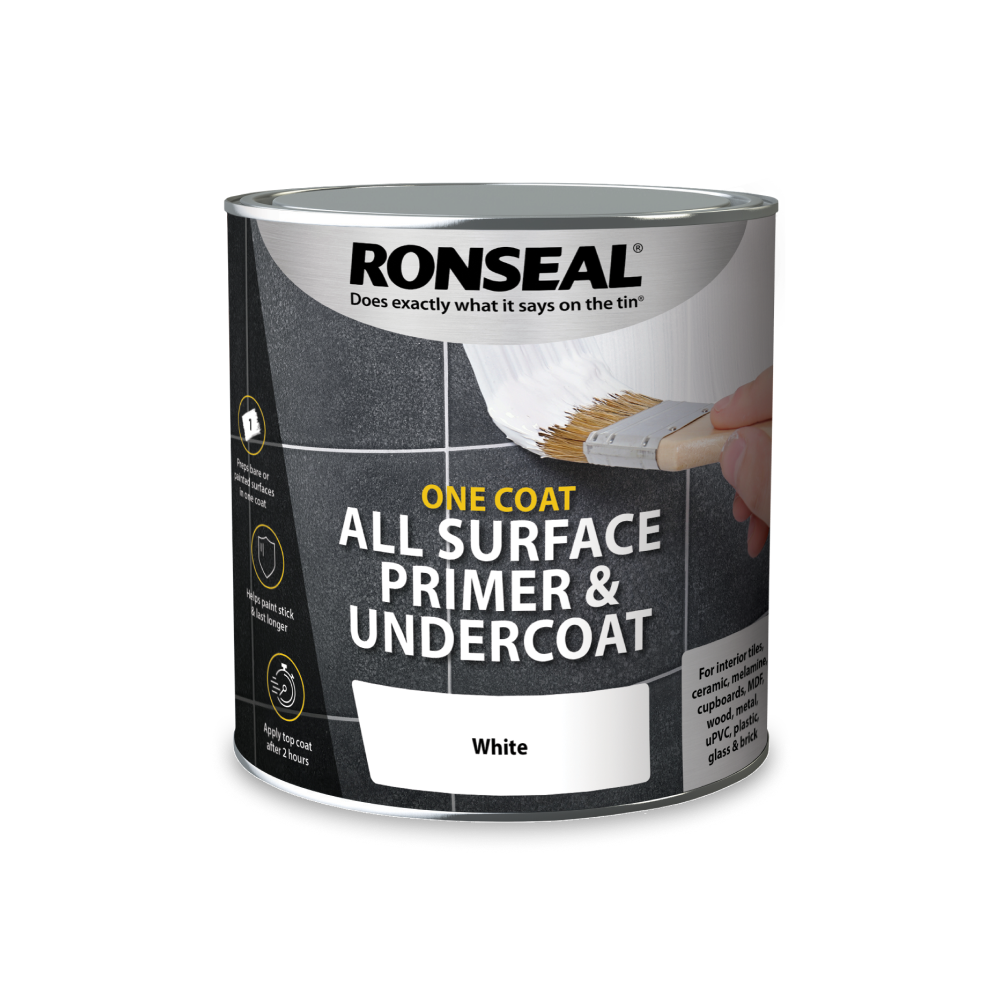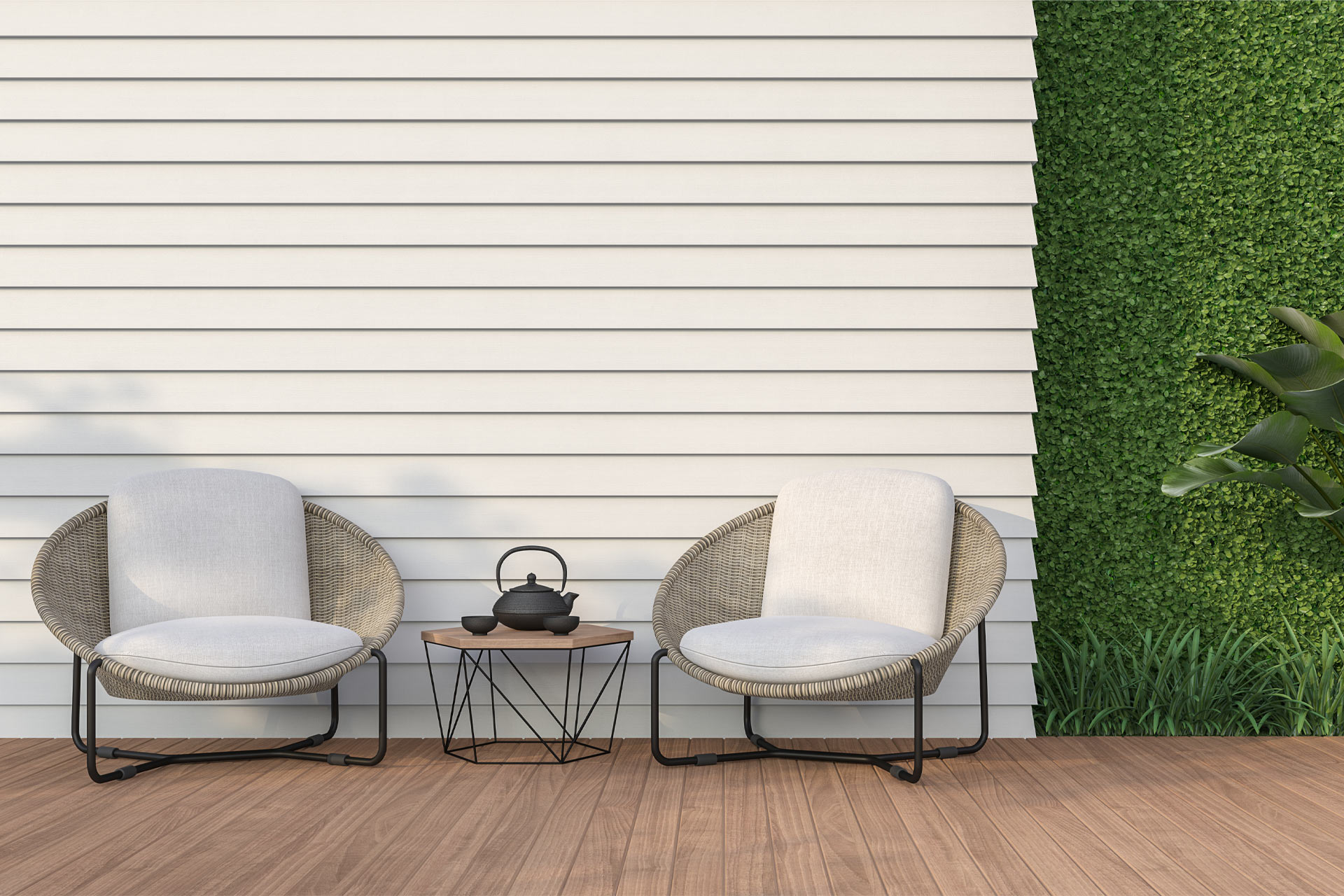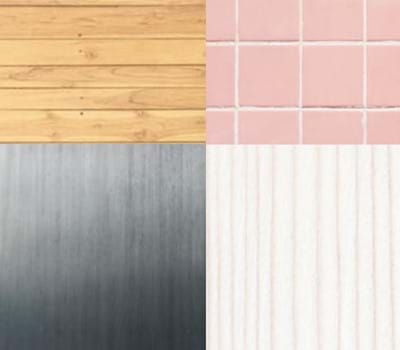One Coat All Surface Primer and Undercoat
Description
Product features
- Makes preparation a breeze
- Also available as a quick dry aerosol to really cut down on prep time
- Ready to paint over in two hours
- uitable for bare of previously painted surfaces
- Covers bold colours
Technical Specification
| Usage |
Most interior surfaces – tiles, ceramic, melamine, cupboards, MDF, wood, metal, uPVC, plastic, glass & brick. Don’t use on stainless steel, brass, rusty metal, floors or |
| Coverage |
250ml - This tin will cover 3.5m2 750ml - This tin will cover 10.5m2 2.5L - This tin will cover 35m2 |
| Dry time | Touch dry in 30 minutes, paint over in 2 hours |
| Coat time | No need! |
| Number of coats | One |
| Colours | White |
| Finish | Matt |
| Durability |
Works on almost any surface and helps paint stick |
| Application | Brush |
| Base | Water |
| Sizes | 250ml, 750ml, 2.5L |
How much paint do I need?
Measure your area precisely, drop the numbers into this smart calculator and it will tell you straight away how many litres you'll need to complete your project.

It will take you roughly 1-2 hours to do the DIY That's the same as rearranging your furniture, disliking it and then putting it back where it was to begin with.
How do the colours look?
Use on...
This can be painted on almost any bare or painted indoor surface but you’ll still need to do a small amount of prep before you can apply it.
How to prepare bare wood for priming
- Use 120 grit sandpaper and sand in the direction of the wood grain.
- Wipe down the dust with white spirit and a cloth.
- Fill in holes and cracks.
How to prepare tiles for priming
- Clean the tiles with bleach.
- Use grout cleaner to get rid of stains.
- Wipe down with a damp cloth
- Repair any damaged grout
How prepare cupboards for priming
- Grab some 120 grit sandpaper and give your cupboards and good sanding.
- Let the dust settle and then wipe it off with white spirit and a cloth.
- Any small cracks or holes should be filled in.
How to prepare metal for priming
This isn’t suitable to use over rust.
- Lightly sand with fine wet and dry sandpaper. If you’re painting galvanised metal, you don’t need to sand it.
- Wipe down the sand shavings with white spirit and a cloth.
How to prepare uPVC for priming
- Just lightly sand with 120 grit sandpaper.
- Wipe down with a damp cloth.
How to prepare previously painted surfaces for priming
- Paint that’s in a good condition only needs a quick sand.
- Paint that’s peeling, flaking or cracked should be sanded off. Once you’ve done that, wipe down with white spirit.
- Stir the tin
- Apply the primer. If you’re painting wood, paint in the direction of the grain.
- Wait two hours and that’s it! It’s now ready to paint over.
This product it just a primer and should be painted on quickly after it’s dried.
Cleaning
You can clean your brushes in warm soapy water. Once you’ve painted over the primer, you’ll be able to clean the surface just like normal.
Repair
If you spot a bit of damage to your primer, don’t worry it’s easy to fix. Sand down the specific spot and then reapply a coat of primer.

